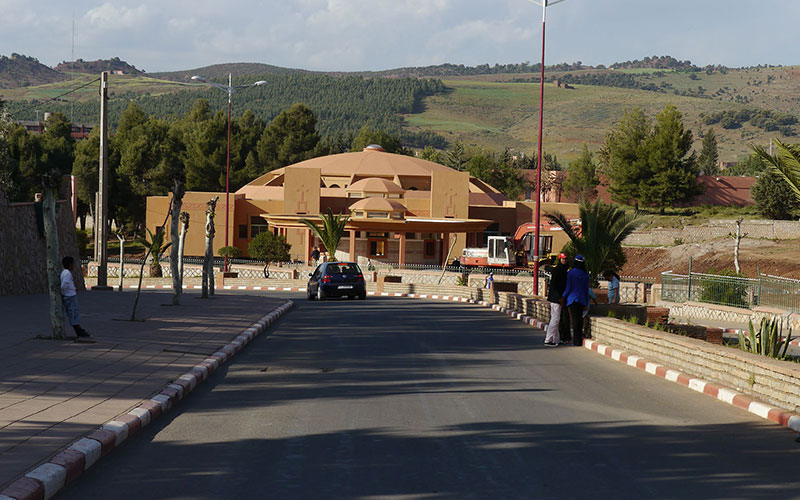The M’Goun Geopark Museum serves as a dedicated space to showcase the intricate geological history of the M’Goun Geopark region, meticulously portraying its evolution across various geological epochs. A team of both national and international museologists collaborates to curate a comprehensive narrative that encompasses 13 distinct themes, forming a captivating and informative journey for visitors:

The 13 distinct themes of The M’Goun Geopark Museum
1. Commencing with the grand inception of the universe, the museum delves into the cosmic phenomena, tracing the timeline from the monumental Big Bang to the formation of our planet Earth.
2. The origin and evolution of life take center stage, charting the remarkable journey of biological development that led to the diverse array of species we see today.
3. The narrative then delves into the intricacies of the central High Atlas chain, elucidating the formation, filling, and uplifting processes that have shaped this breathtaking landscape.
4. The enigmatic Hercynian mountain range, which has long faded into history, is explored alongside the profound biological upheaval of the Permo-Triassic period, highlighting the sweeping changes that once characterized the Earth.
5. museum transitions to the Lower Jurassic era, focusing on the Atlas pit and its transformation over time, providing insights into the geological shifts that have occurred.
6. The transition from the Middle to Upper Jurassic epochs is captured by studying the continental “Red Beds,” offering a glimpse into the ancient landscapes that once stretched across the region.
7. Visitors are introduced to the captivating world of dinosaur fossils discovered within the Geopark territory, featuring the skeletal remains of these prehistoric giants.
8. Footprints of dinosaurs found in the Geopark area become a focal point, shedding light on the ancient paths these creatures once treaded and leaving lasting imprints on the record.
9. The exhibition looks at the Cretaceous transgression, the boundary between the Cretaceous and Tertiary periods, and the ensuing mass extinction event that reshaped life on Earth.
10. The Tertiary period follows, with a detailed examination of the folding and uplift processes that have contributed to the unique topography of the central Atlas.
11. The significance of water and mineral resources within the Geopark is explored, illuminating their vital role in shaping the landscape and human interaction with it.
12. Geosites, circuits, and routes within the M’Goun Geopark are meticulously highlighted, showcasing the diverse geological features and ways visitors can explore.
13. Finally, the museum dedicates space under its dome to delve into the distinct characteristics and peculiarities of Atlasaurus imelakei, allowing visitors to immerse themselves in the intriguing world of this remarkable prehistoric creature.
In essence, the M’Goun Geopark museum weaves together a narrative that encapsulates the profound geological history of the region, creating an immersive educational experience that caters to both enthusiasts and curious minds seeking to understand the Earth’s transformative journey over millions of years.


